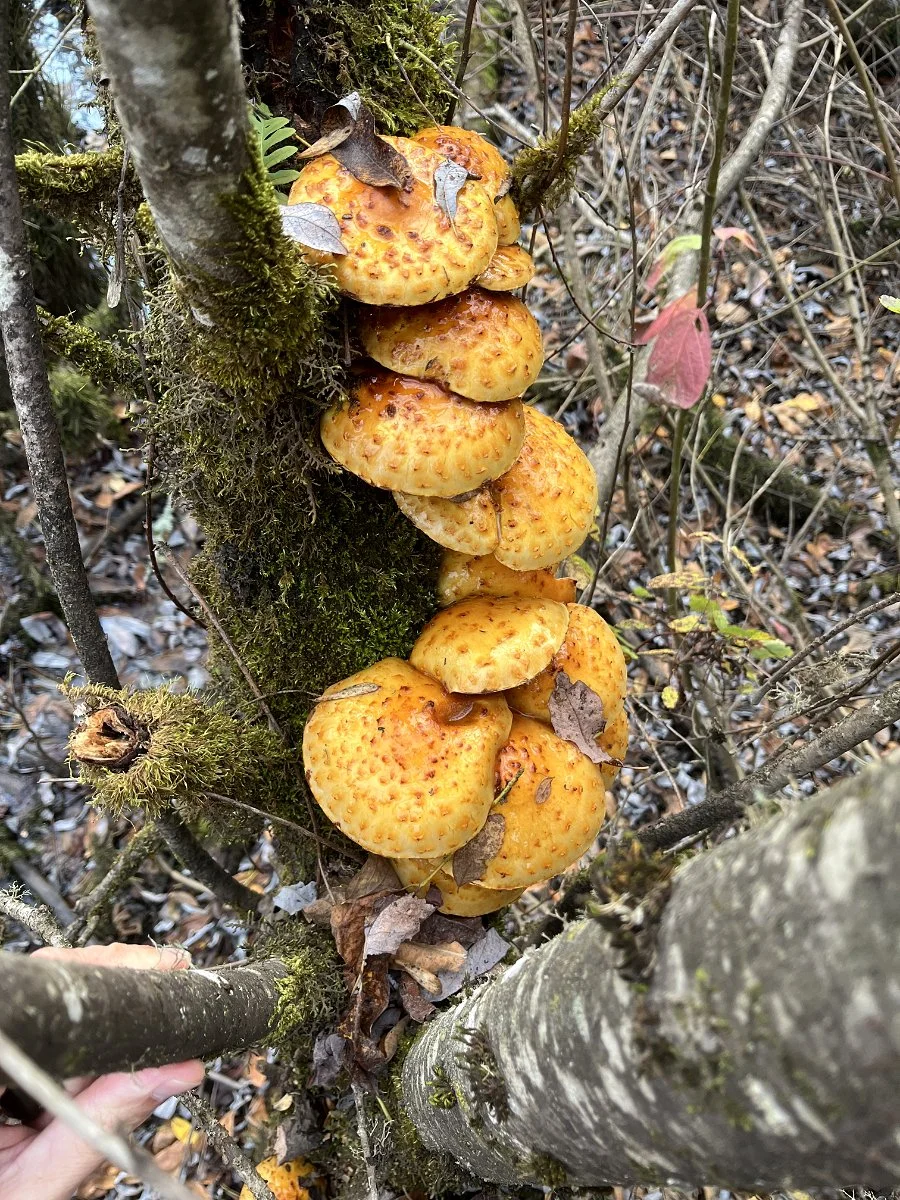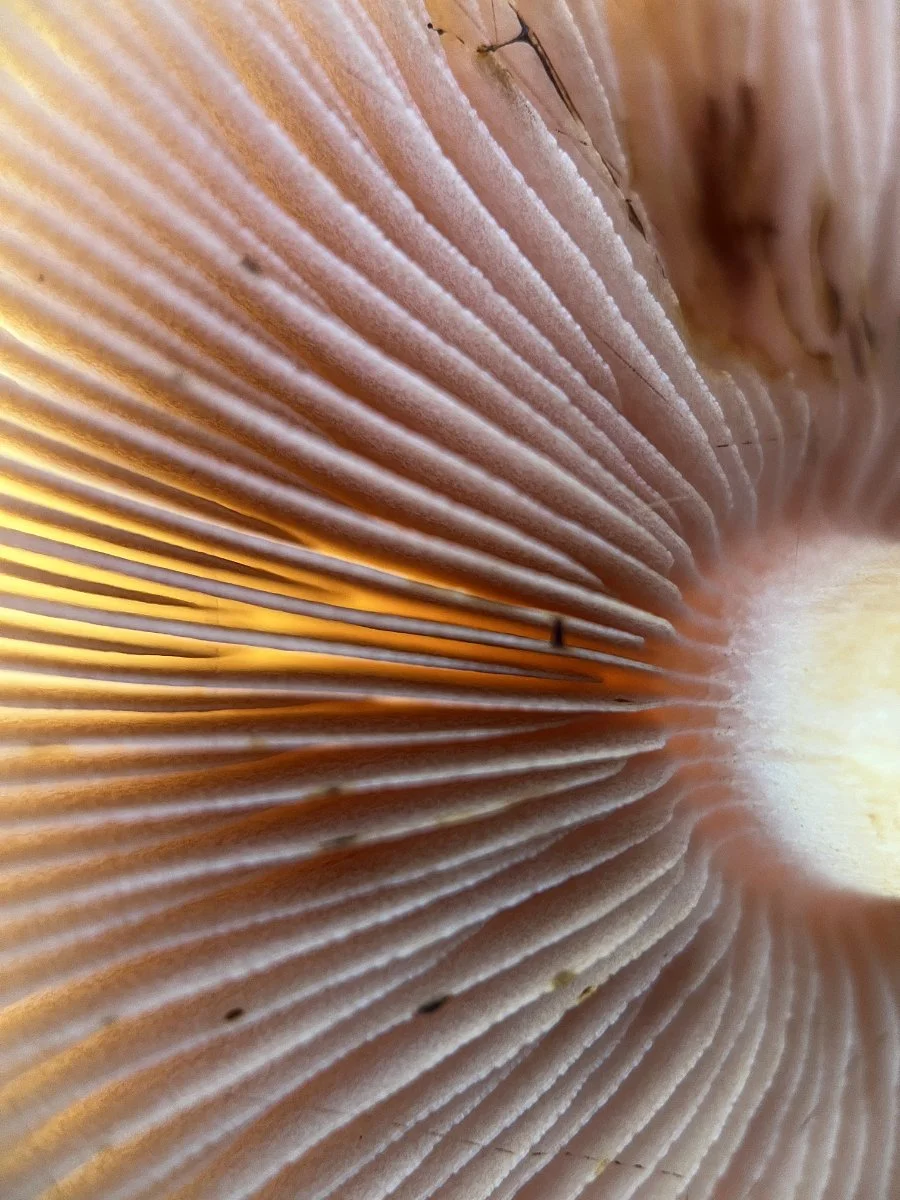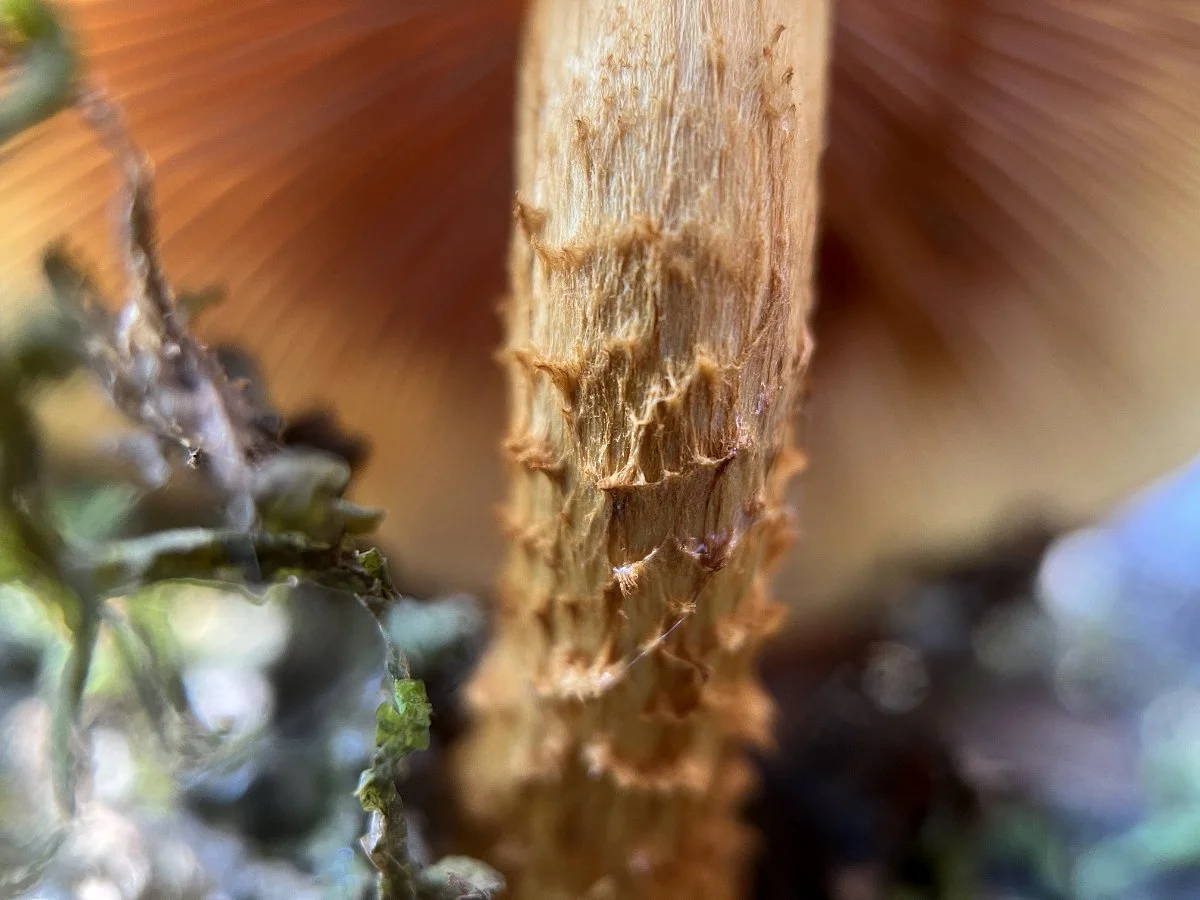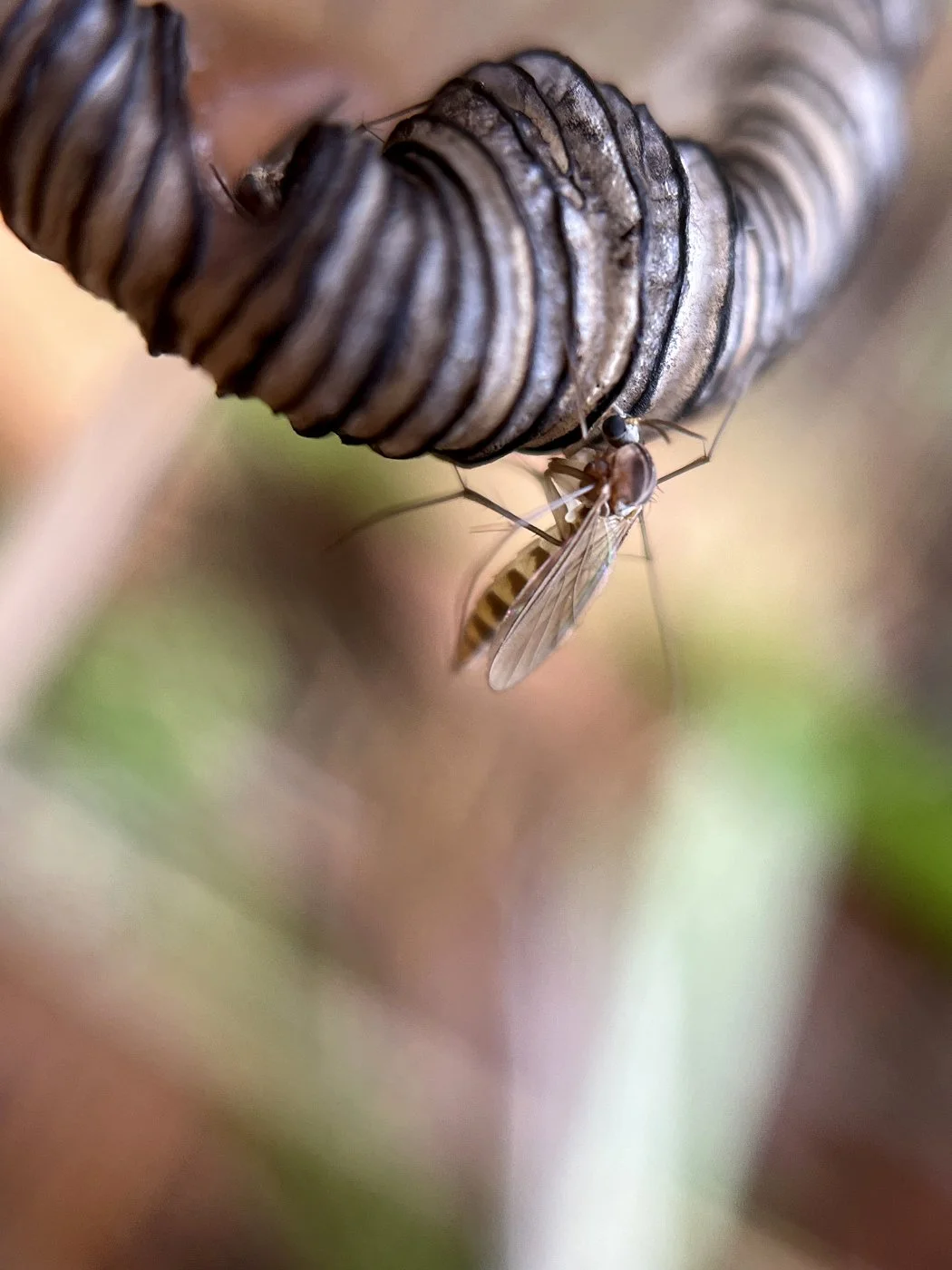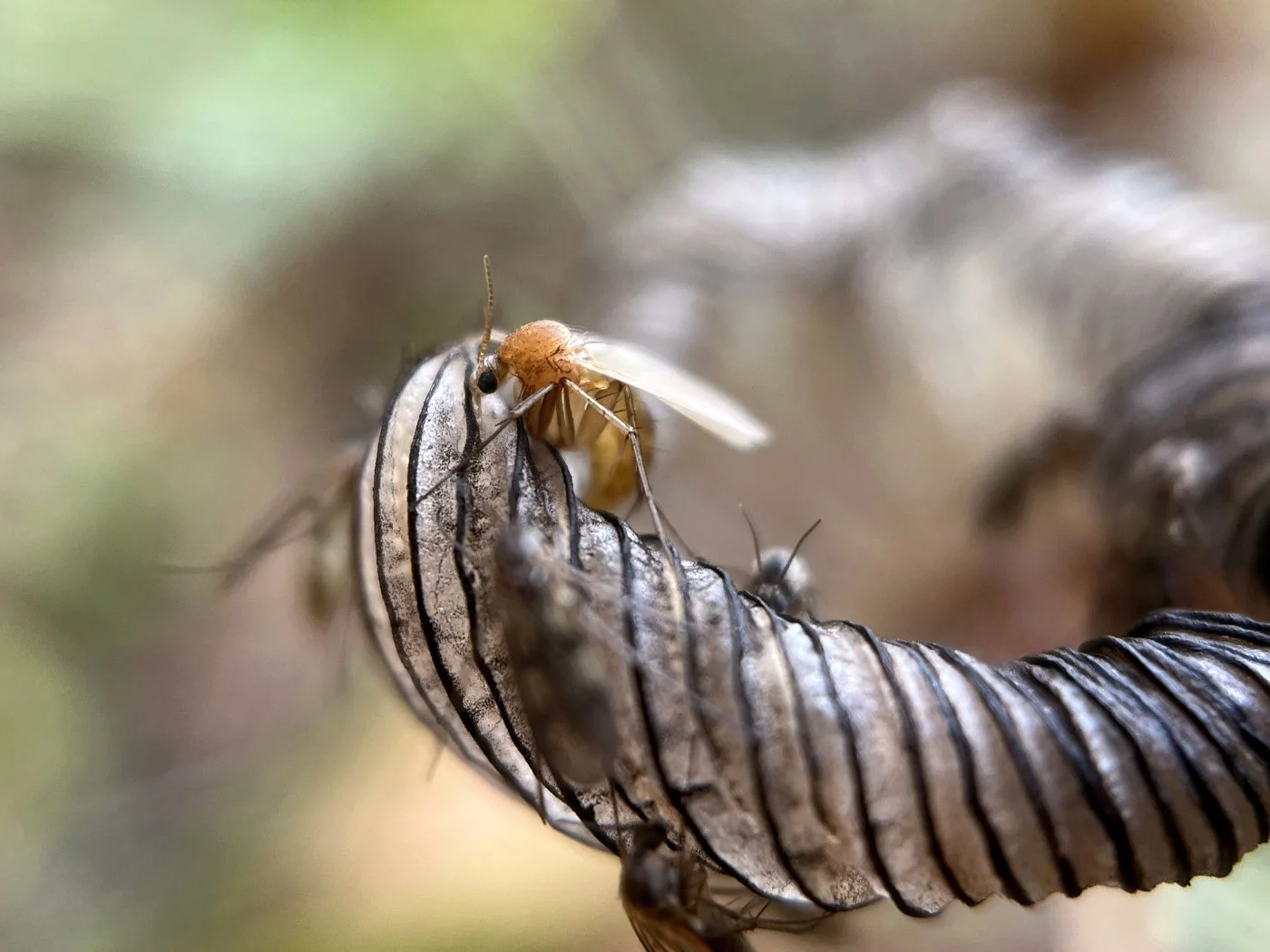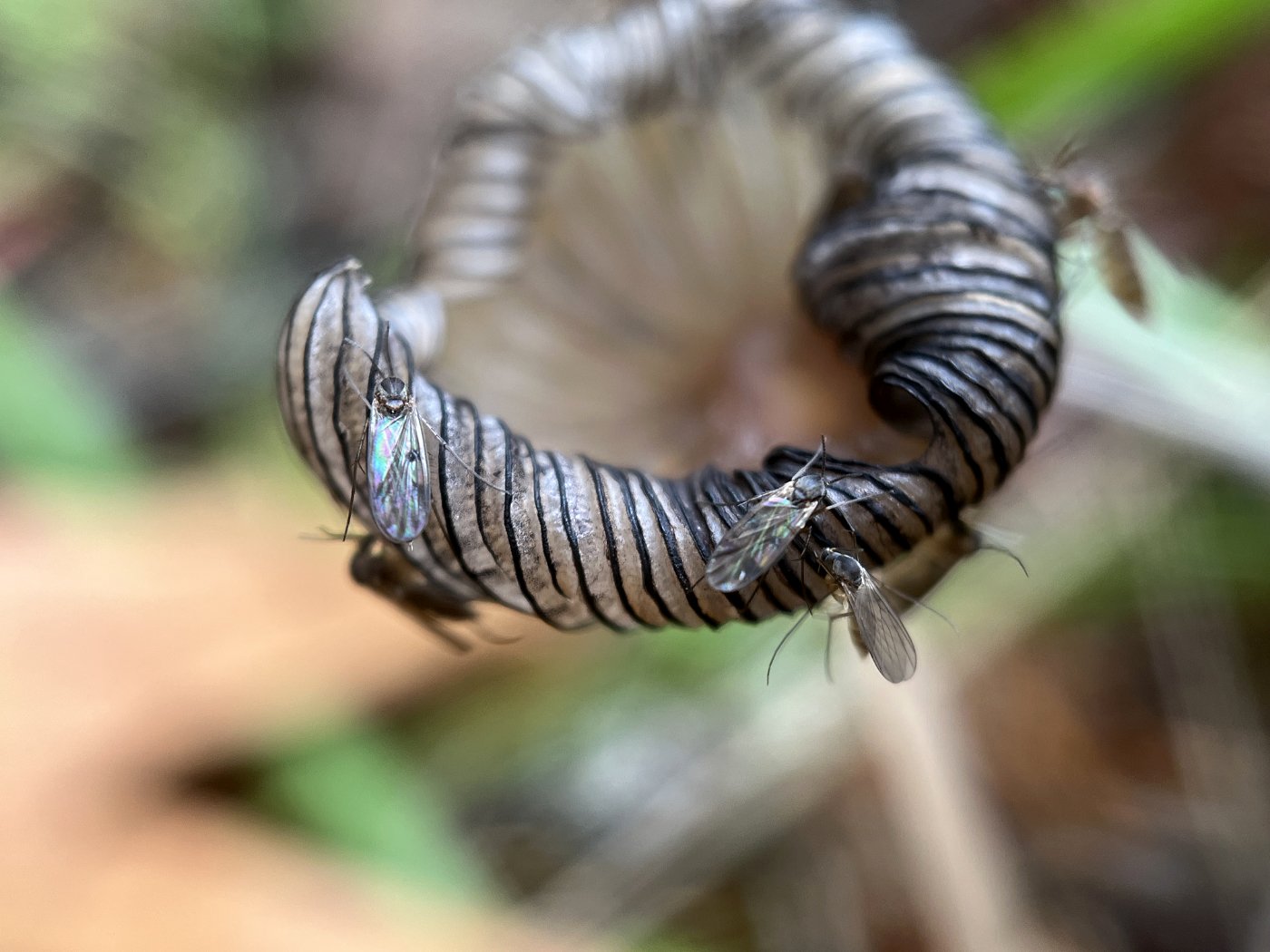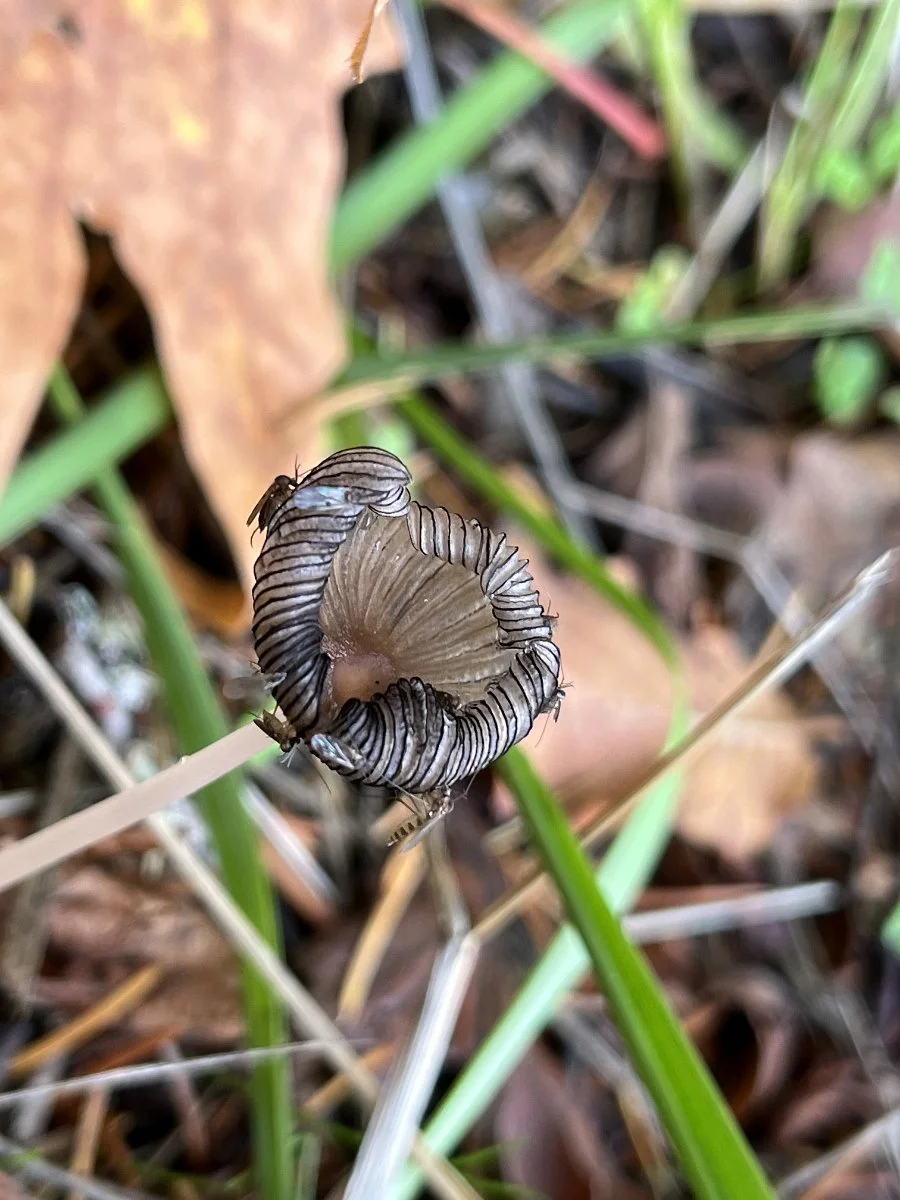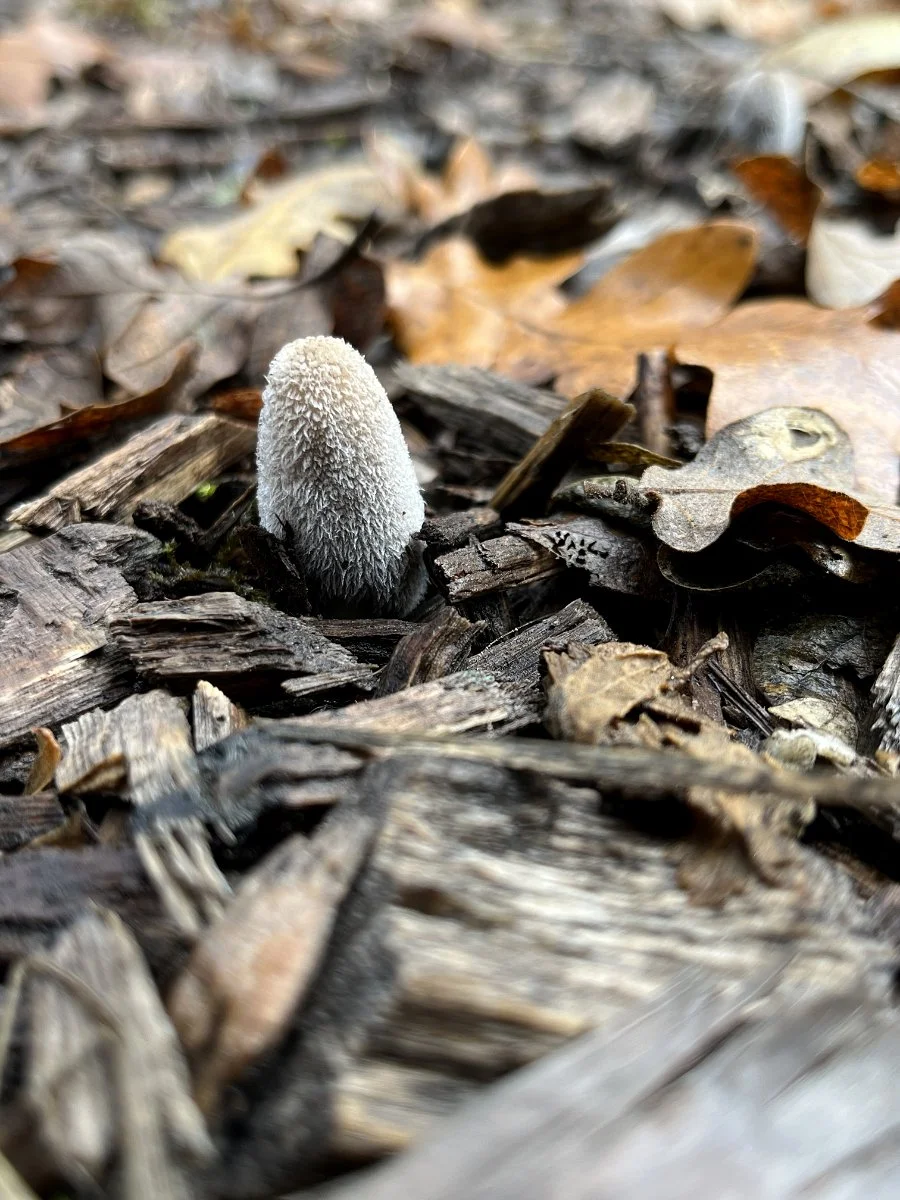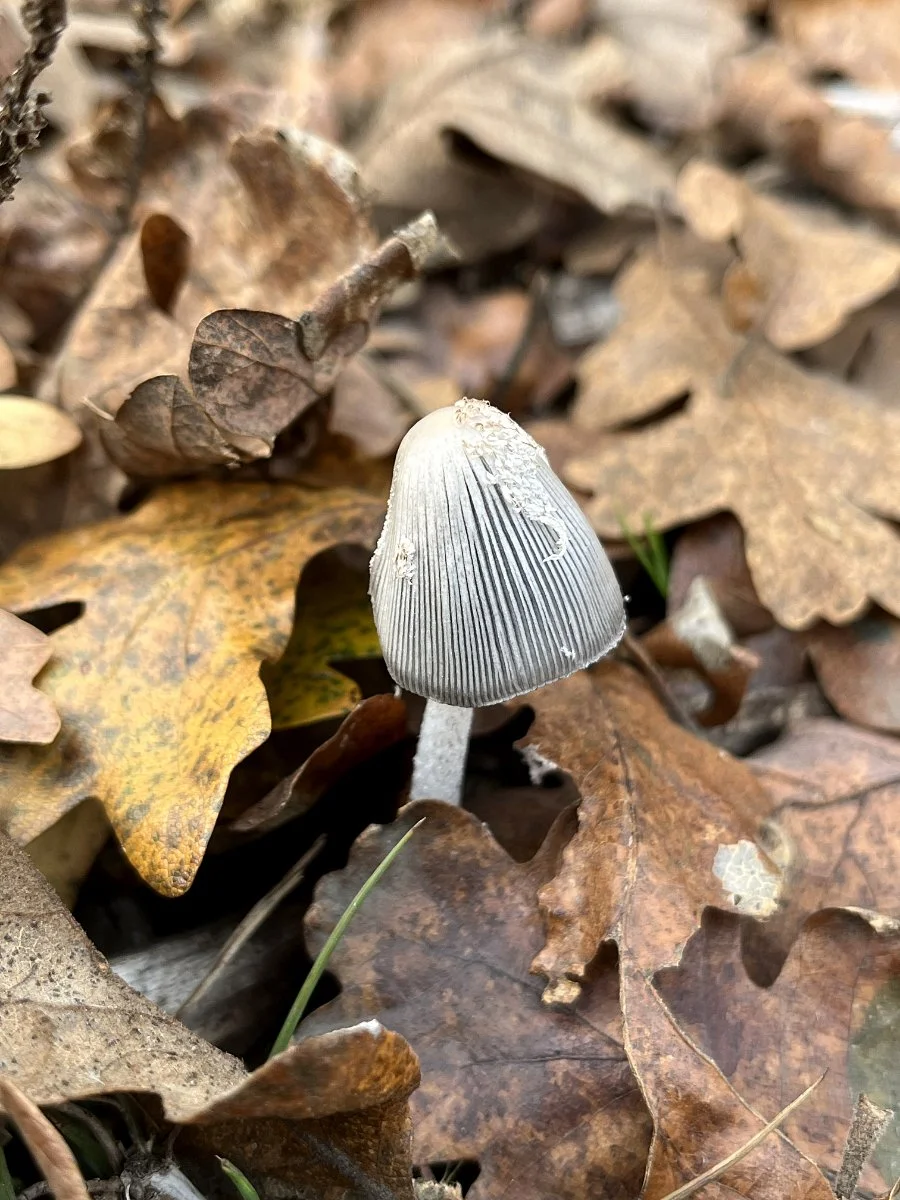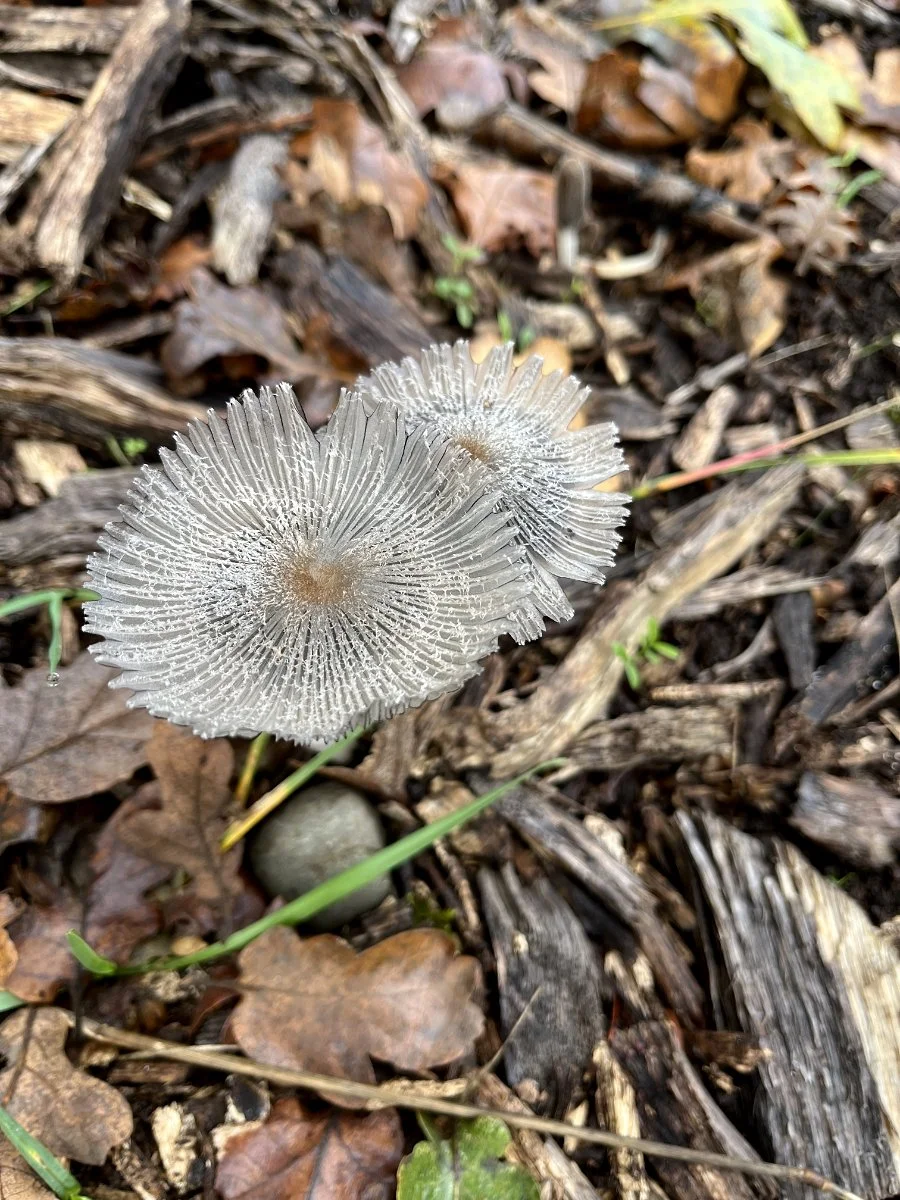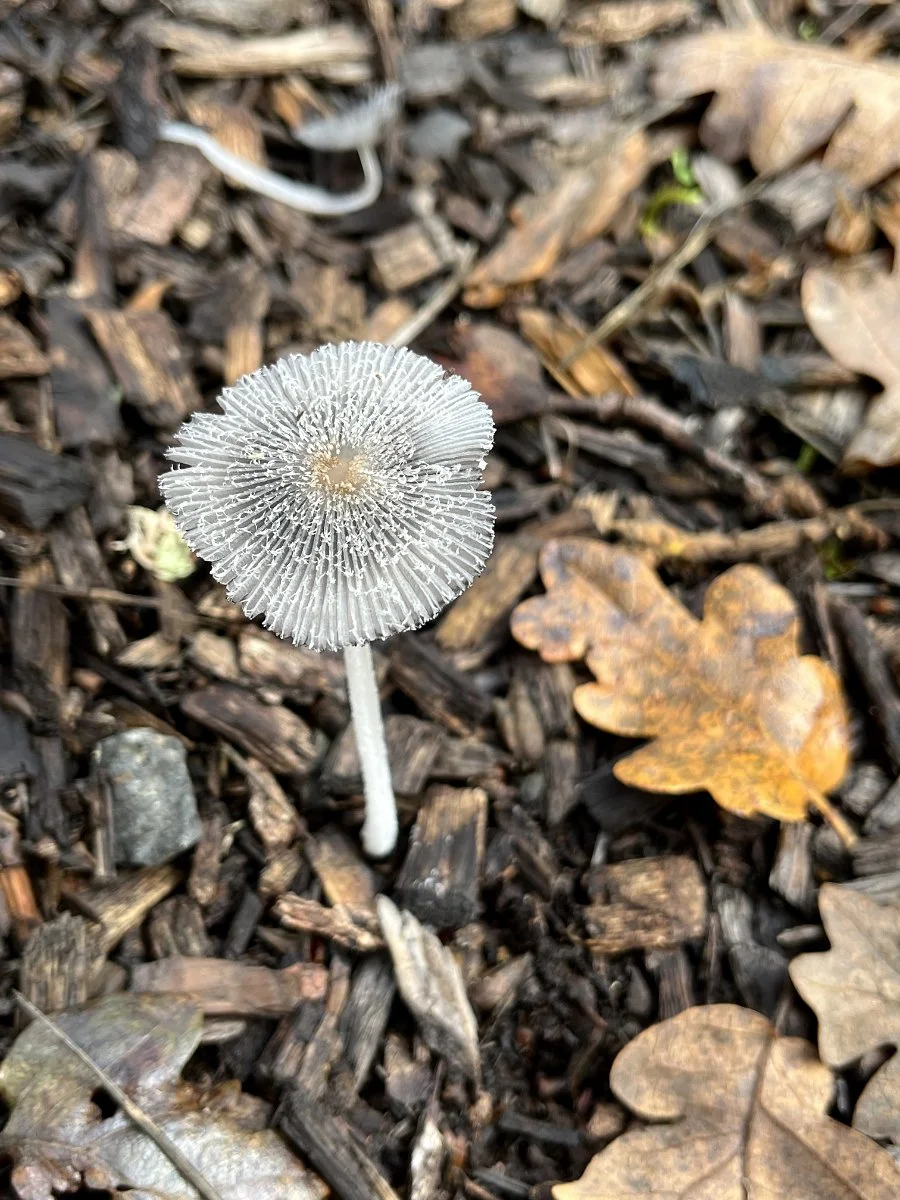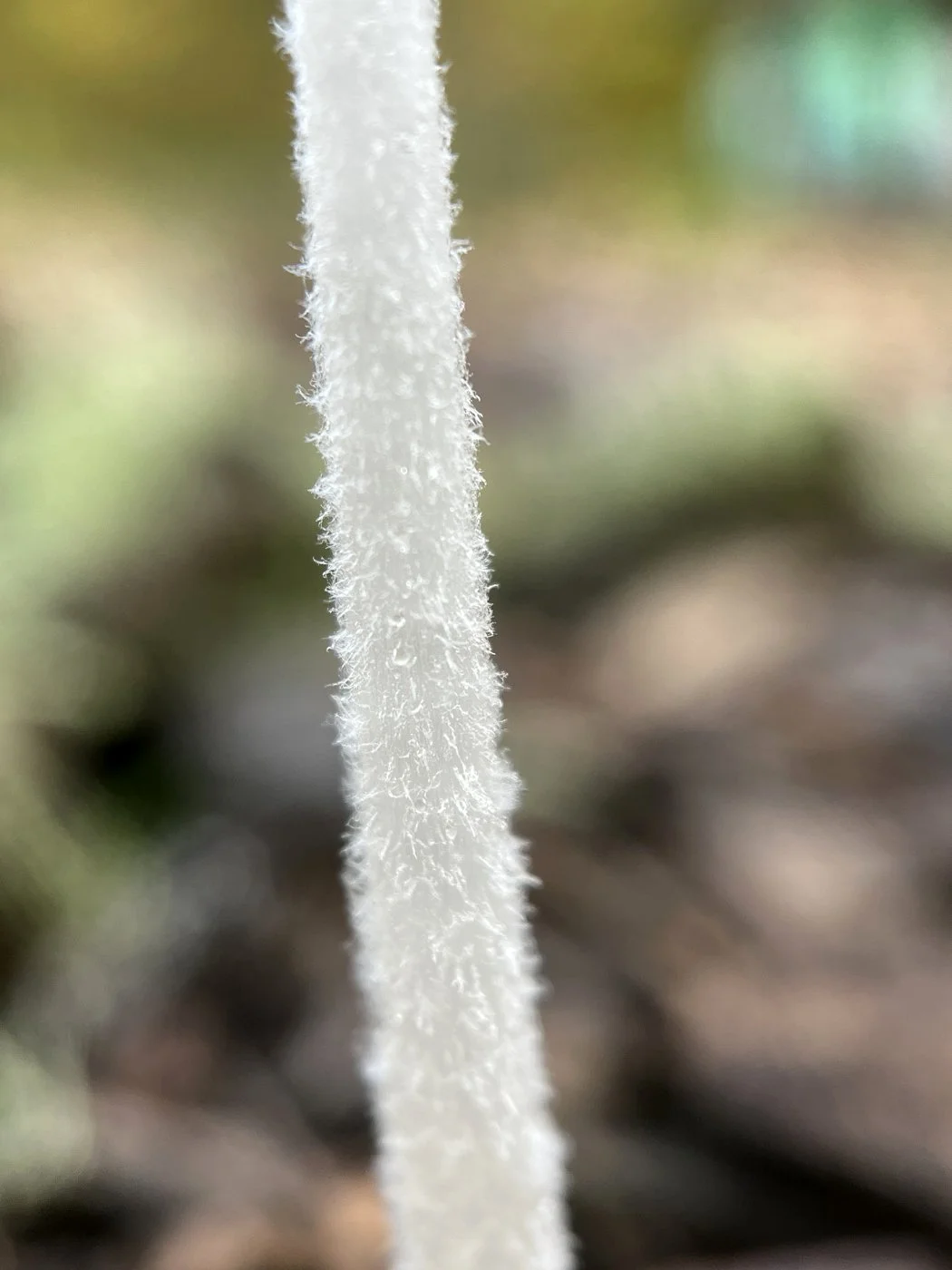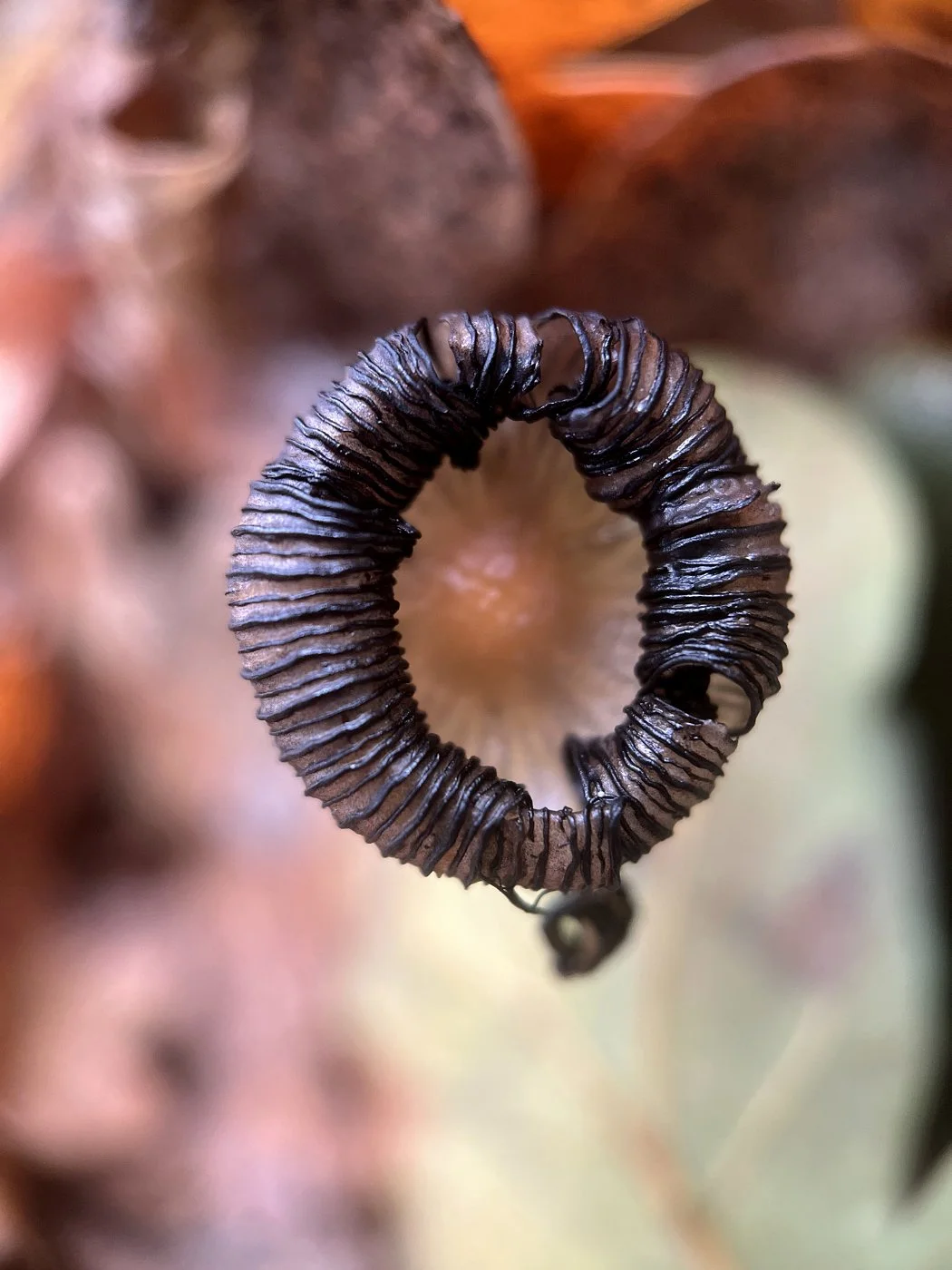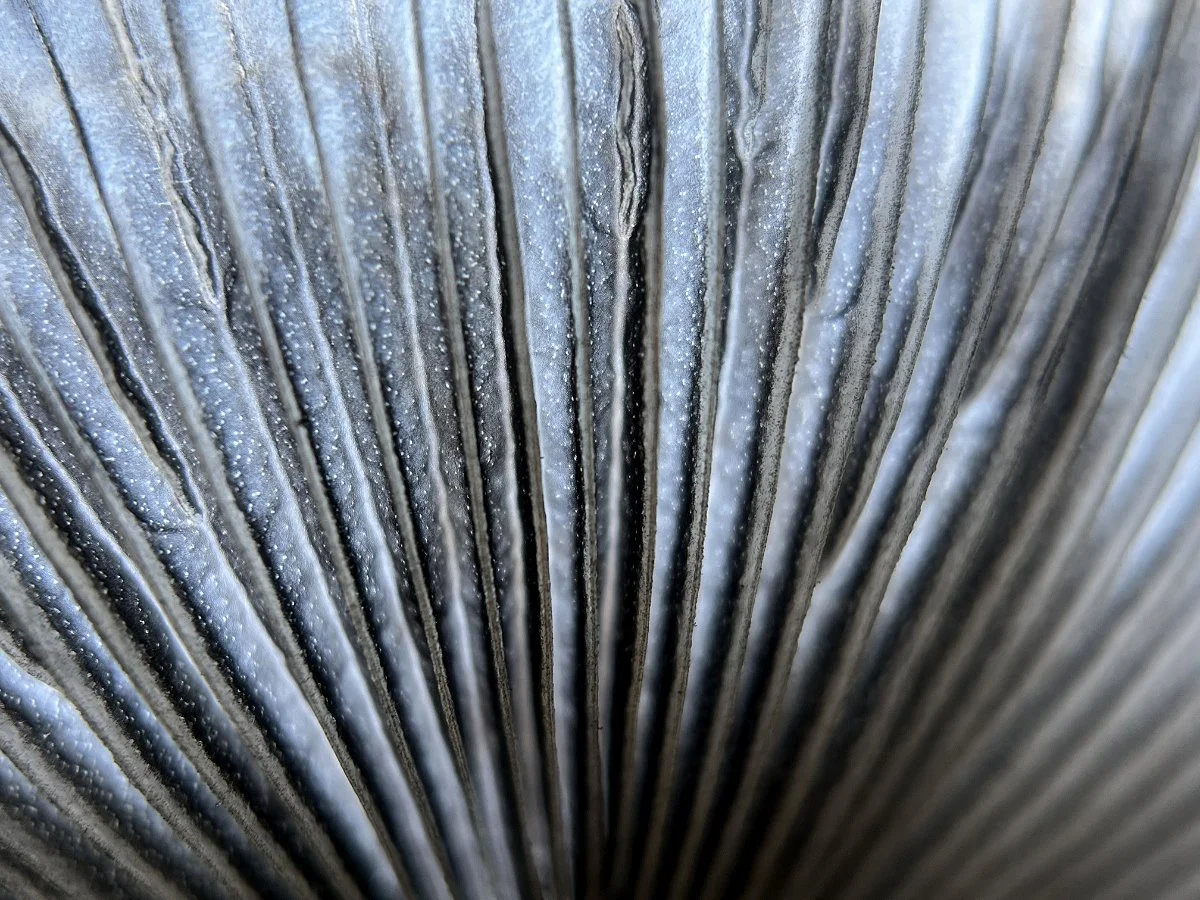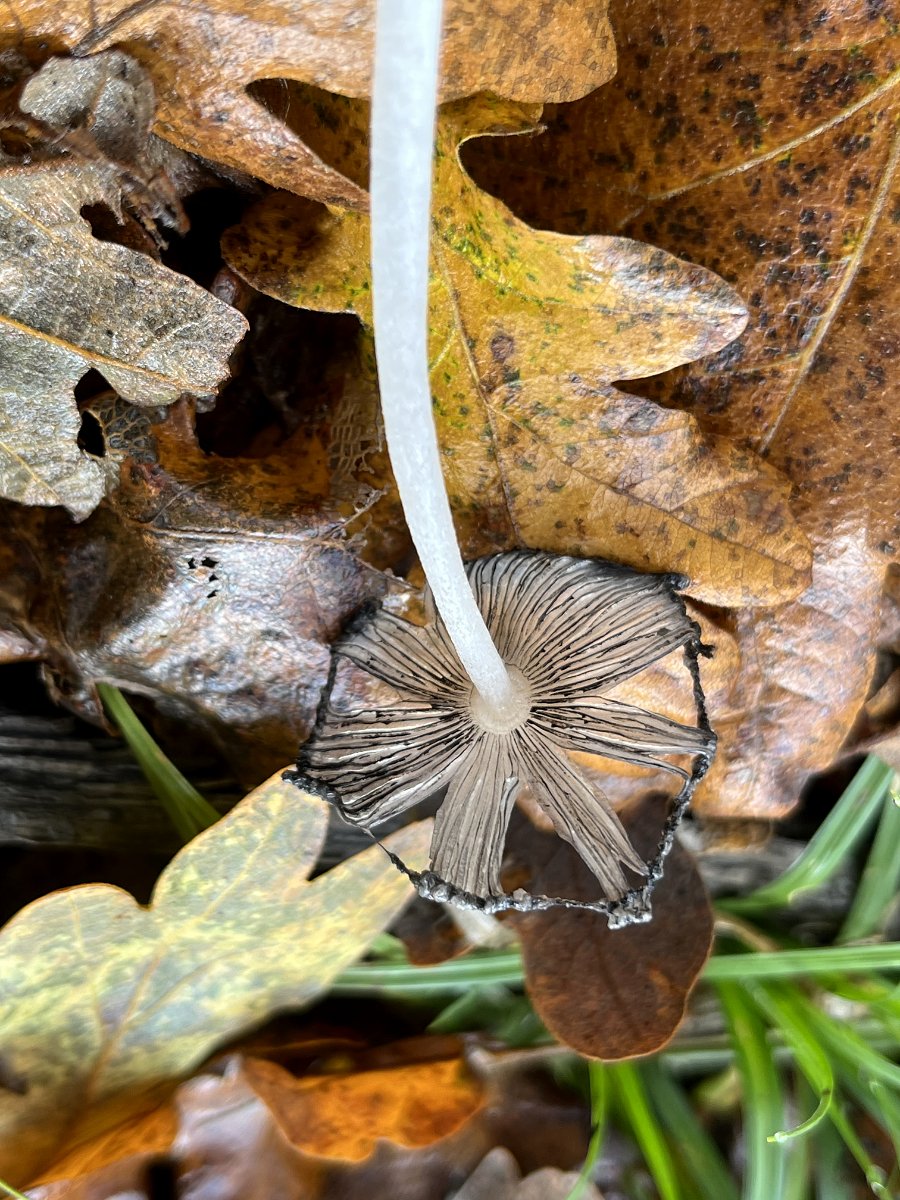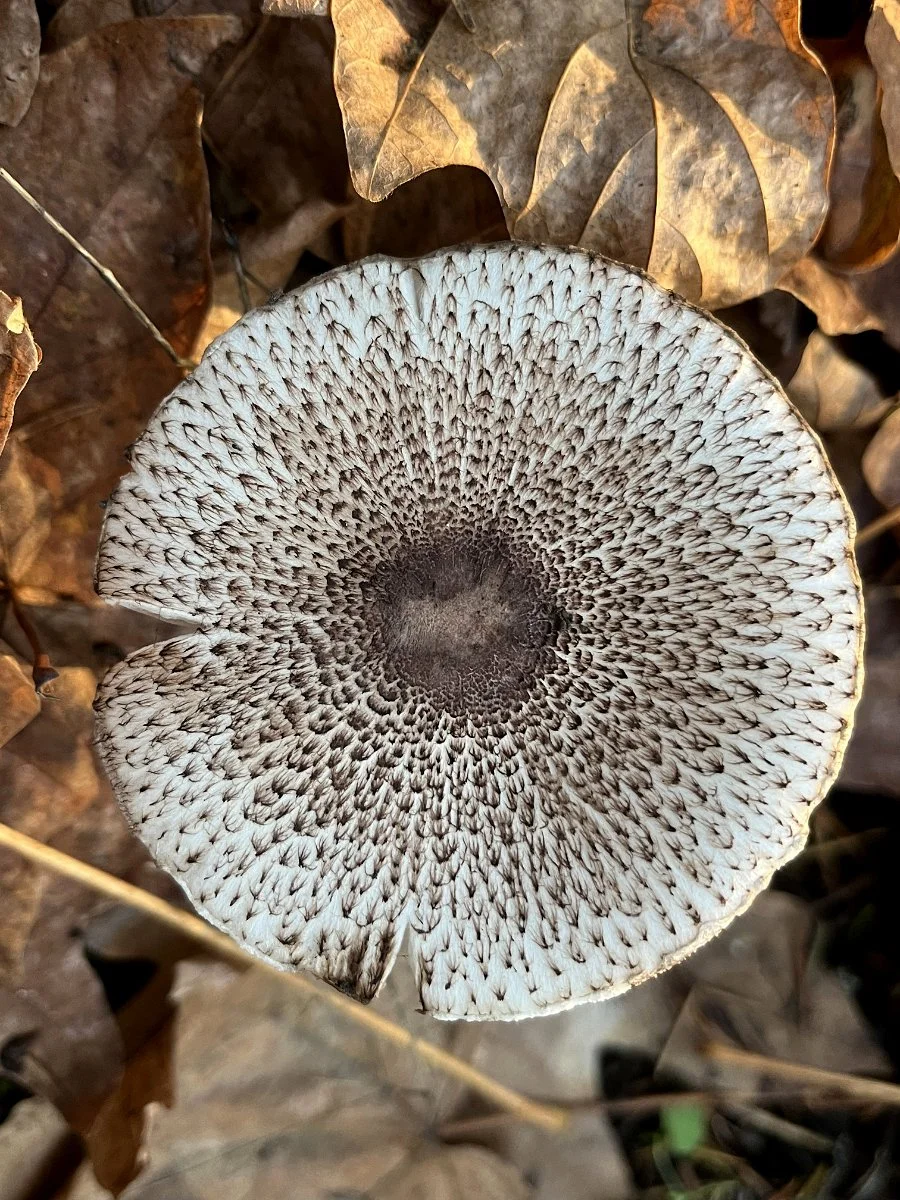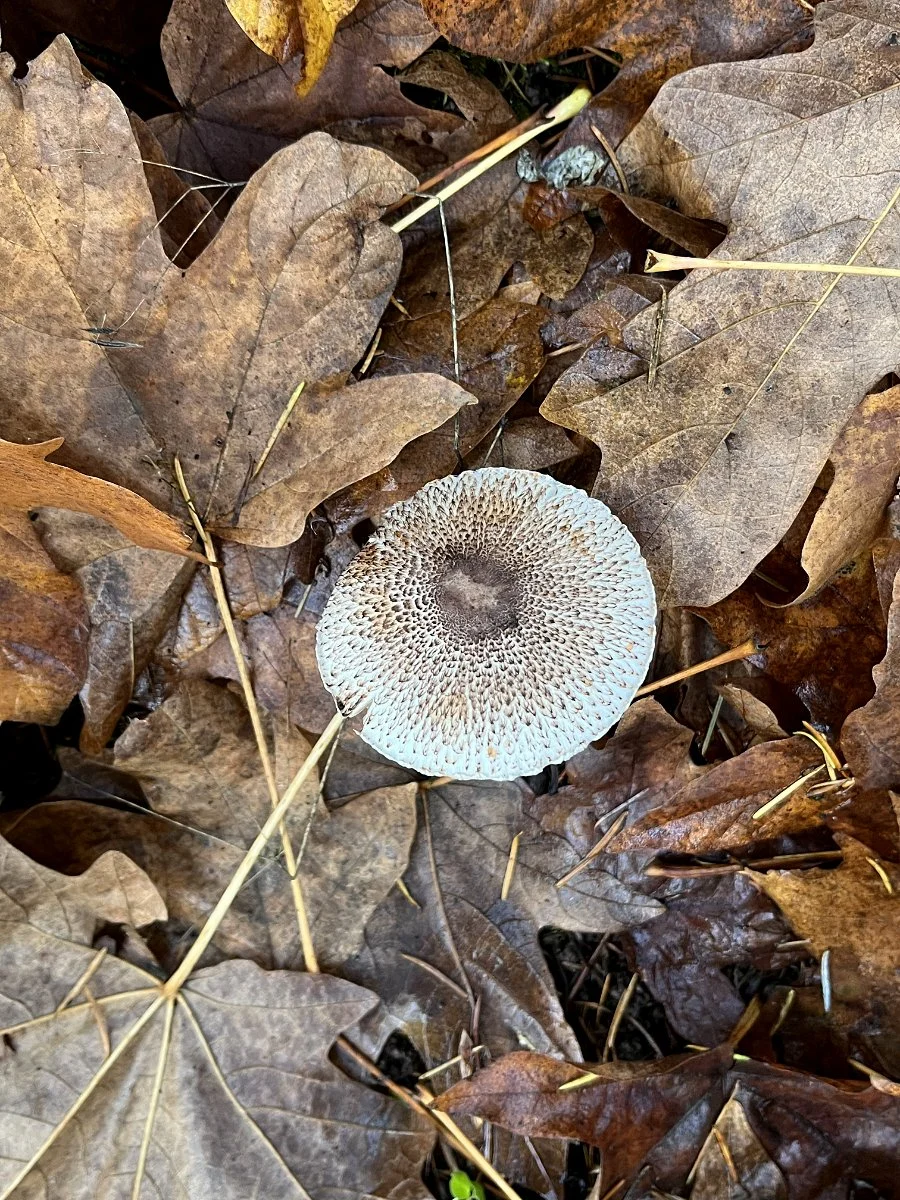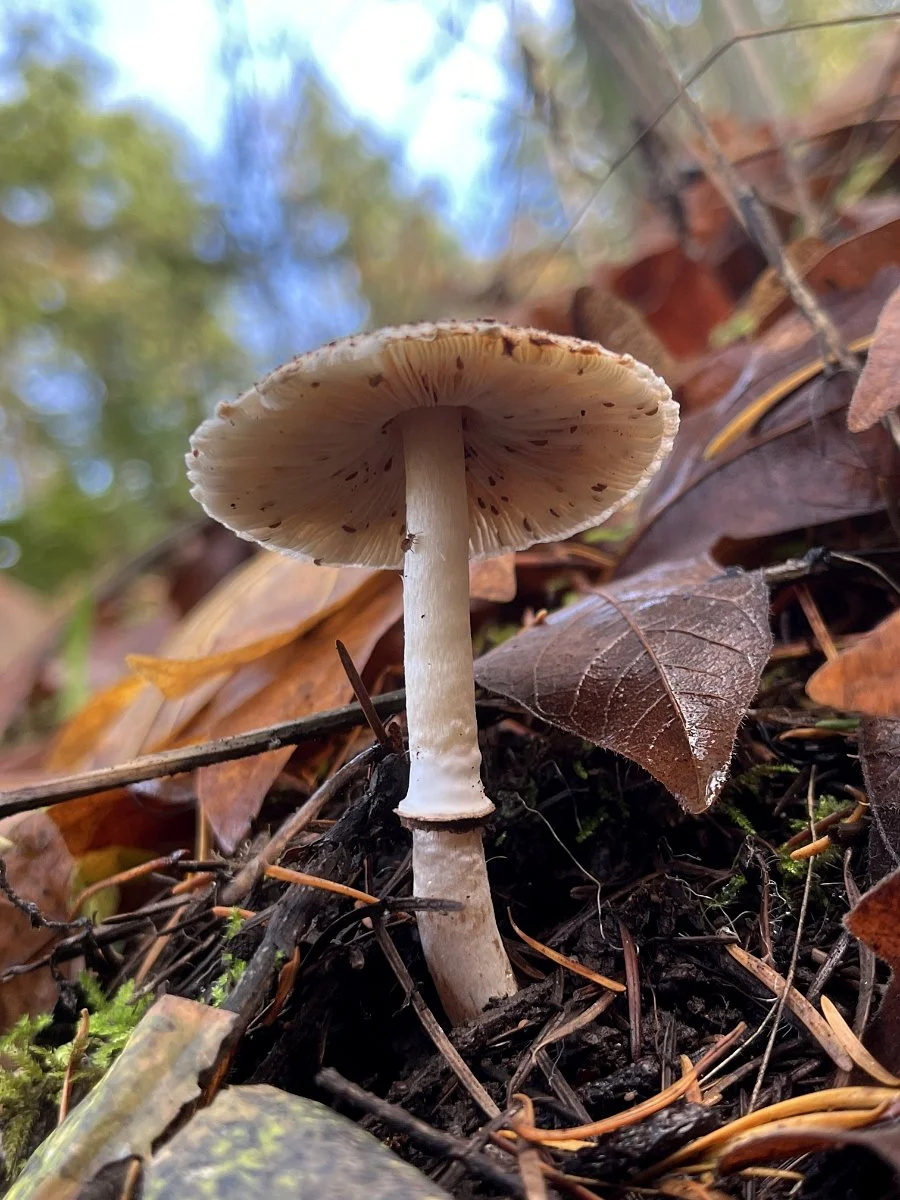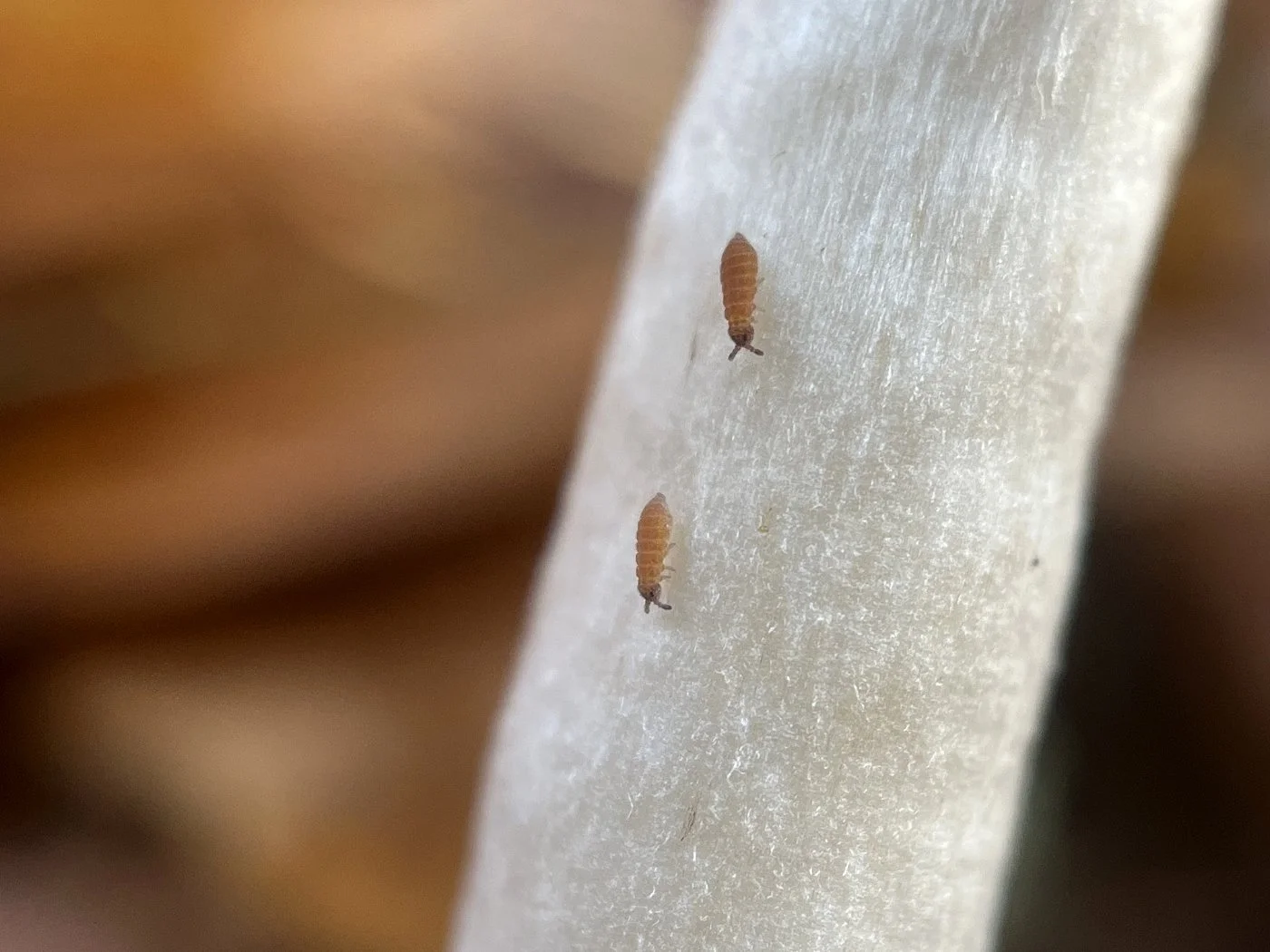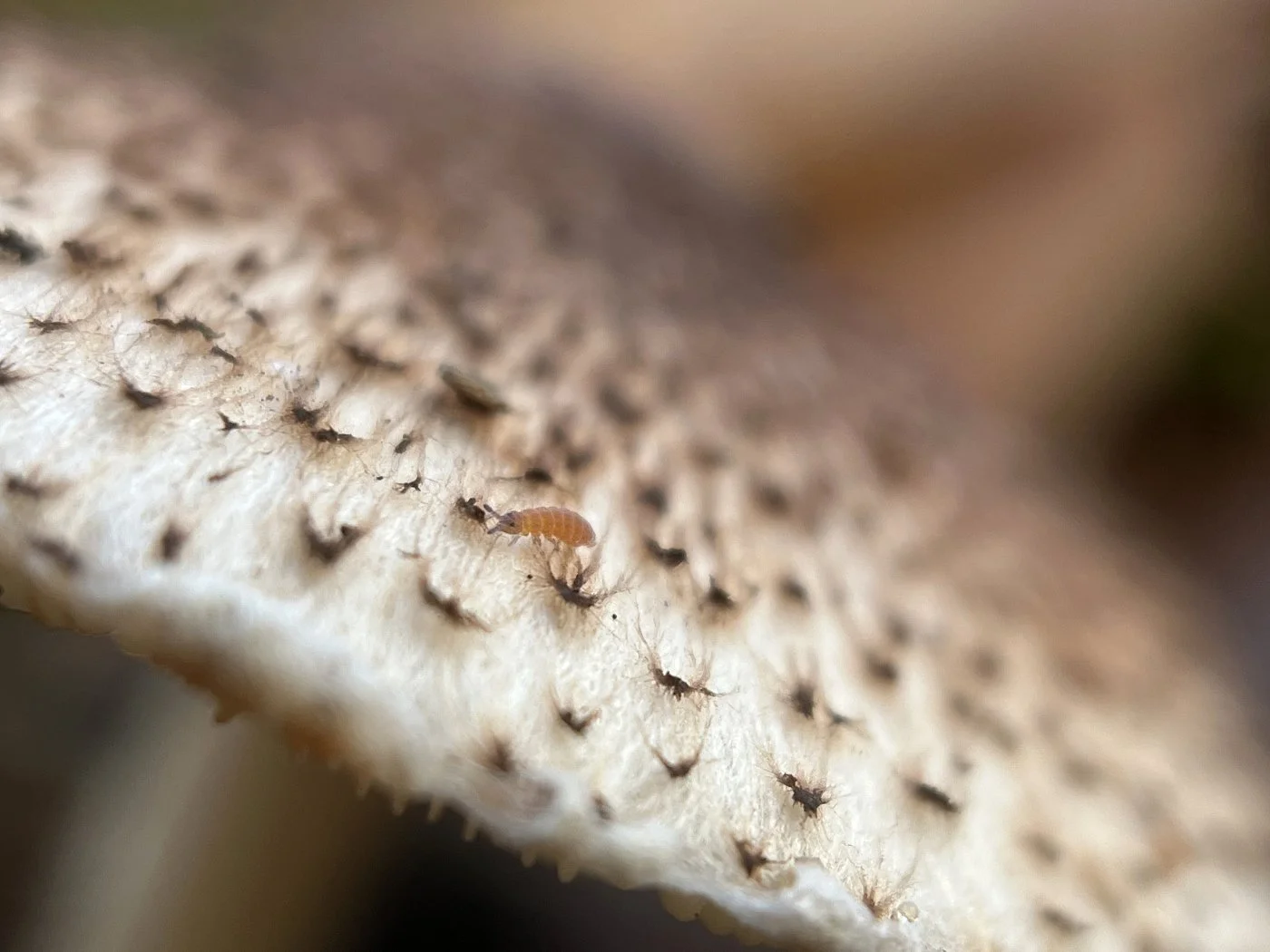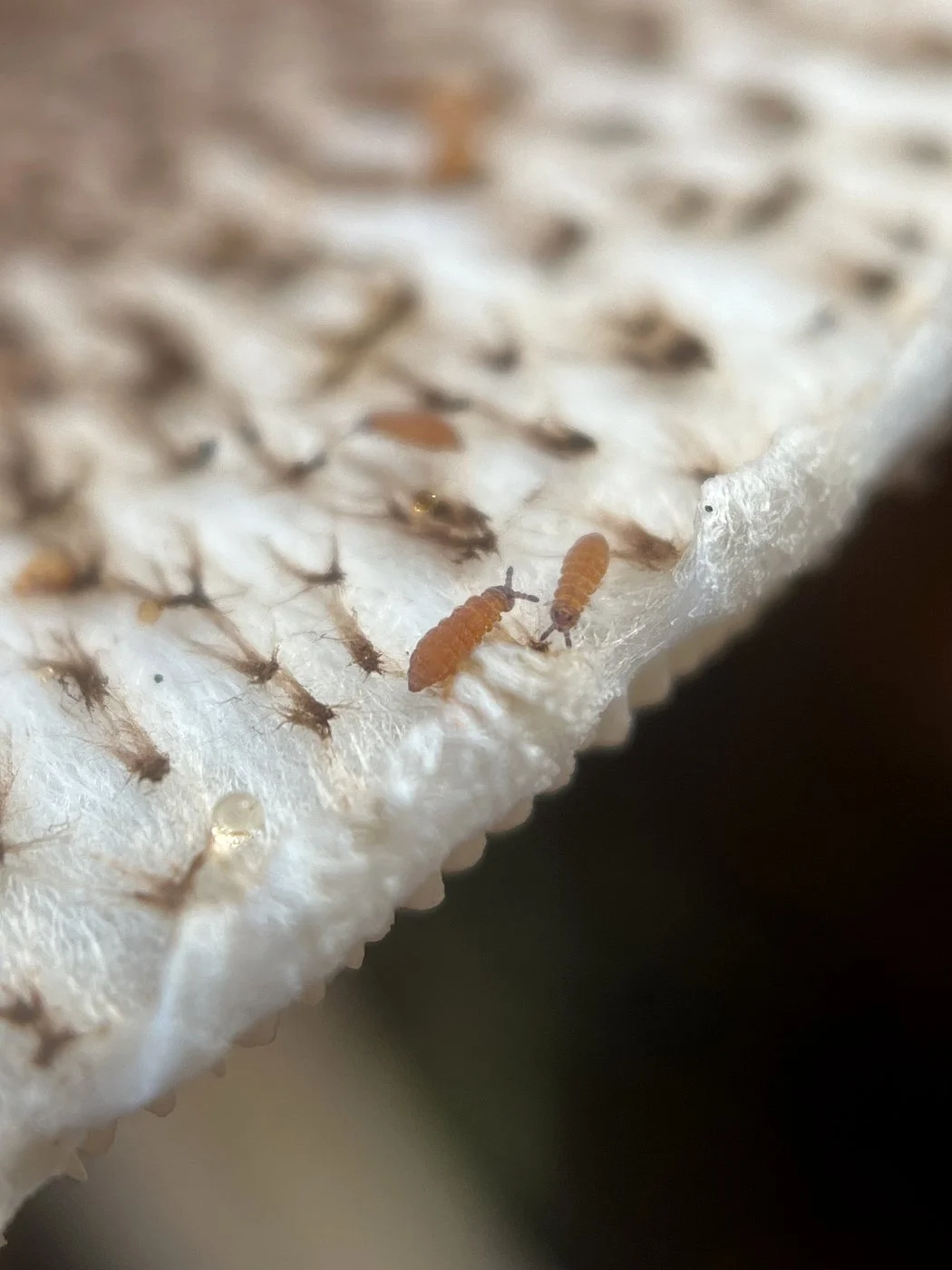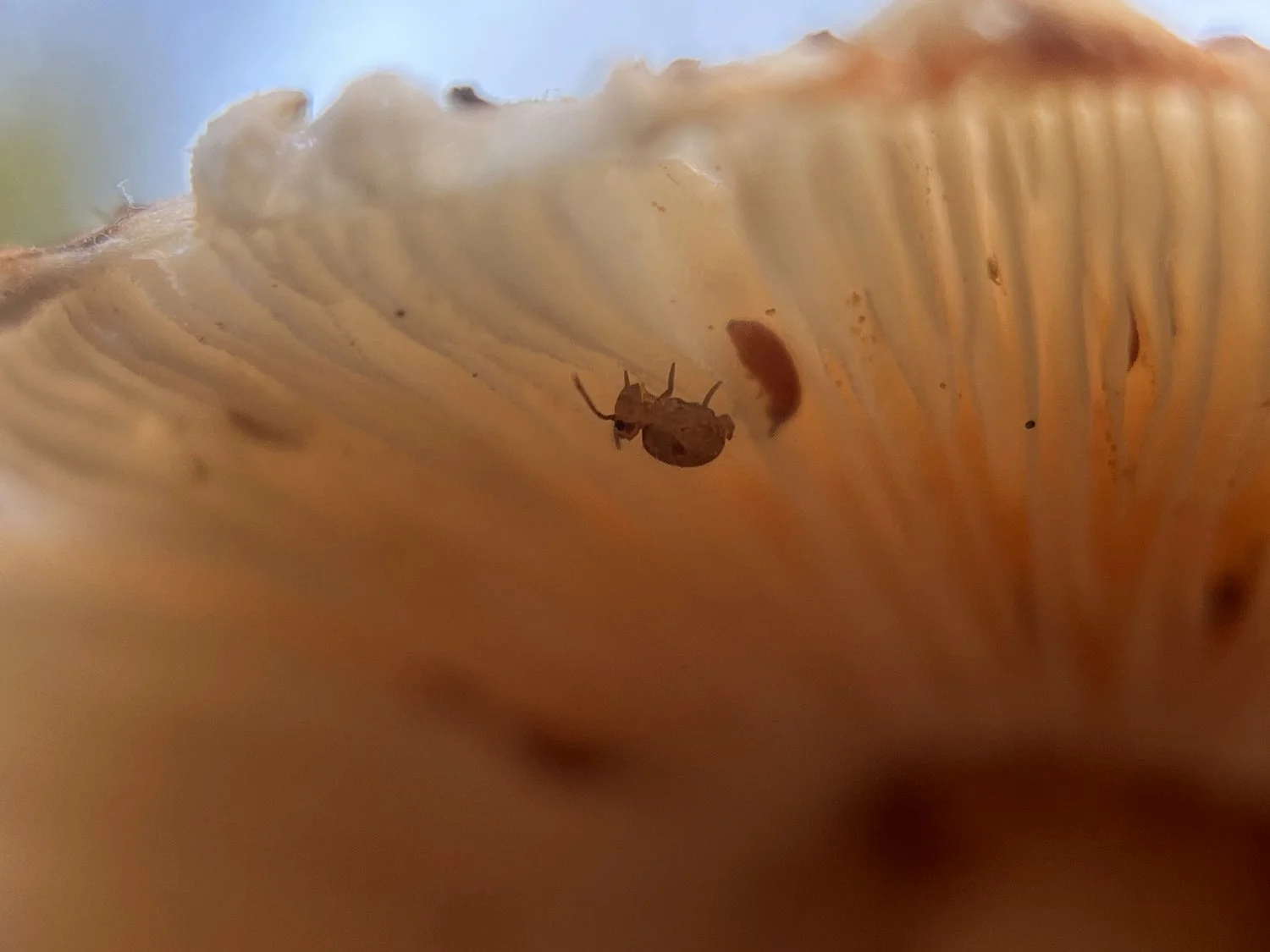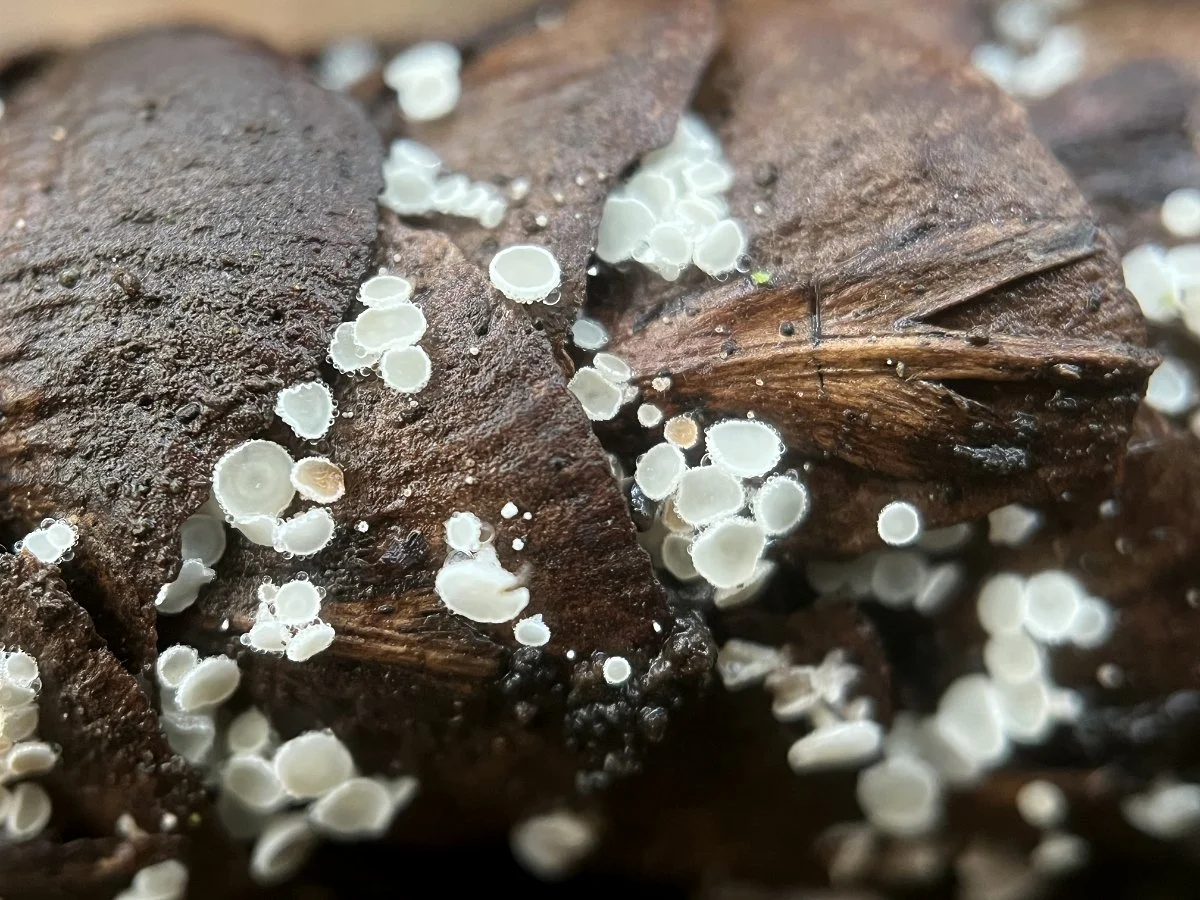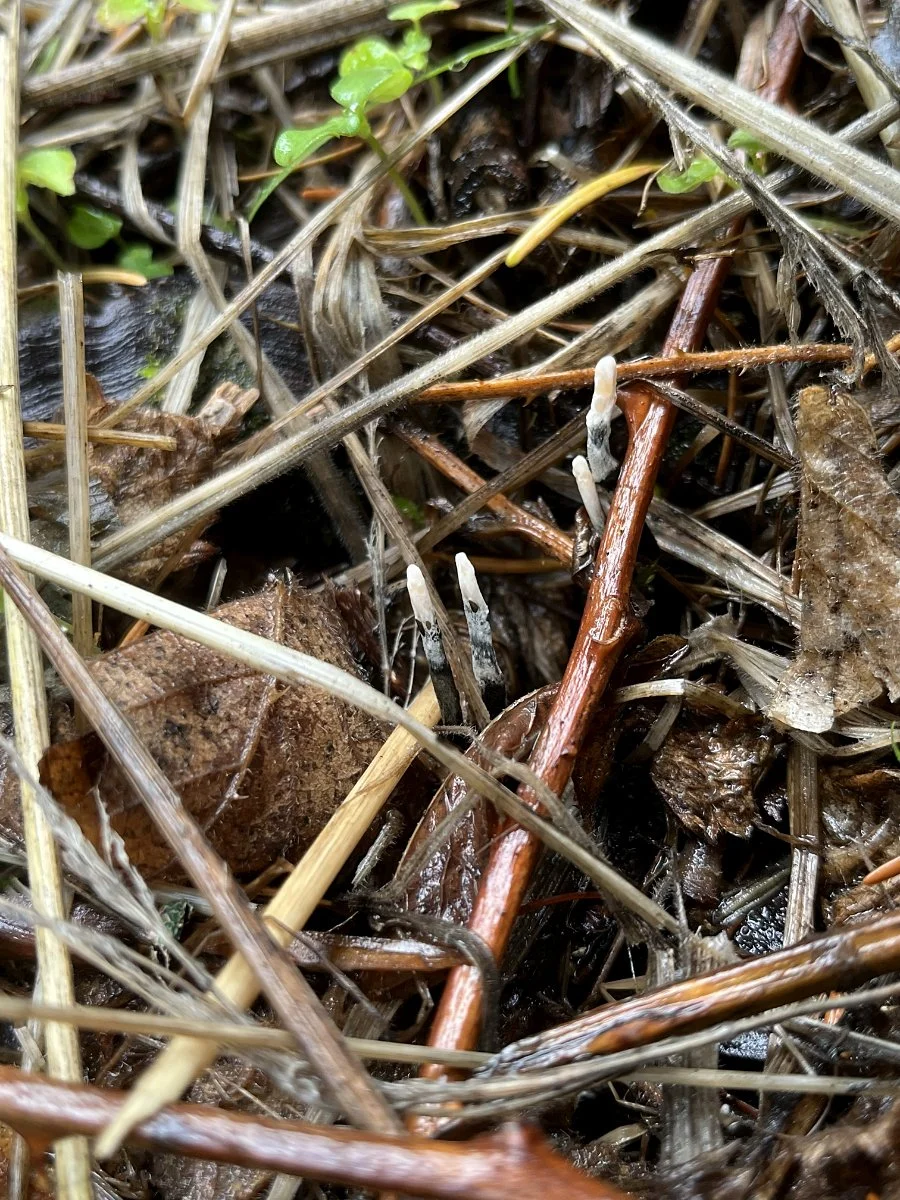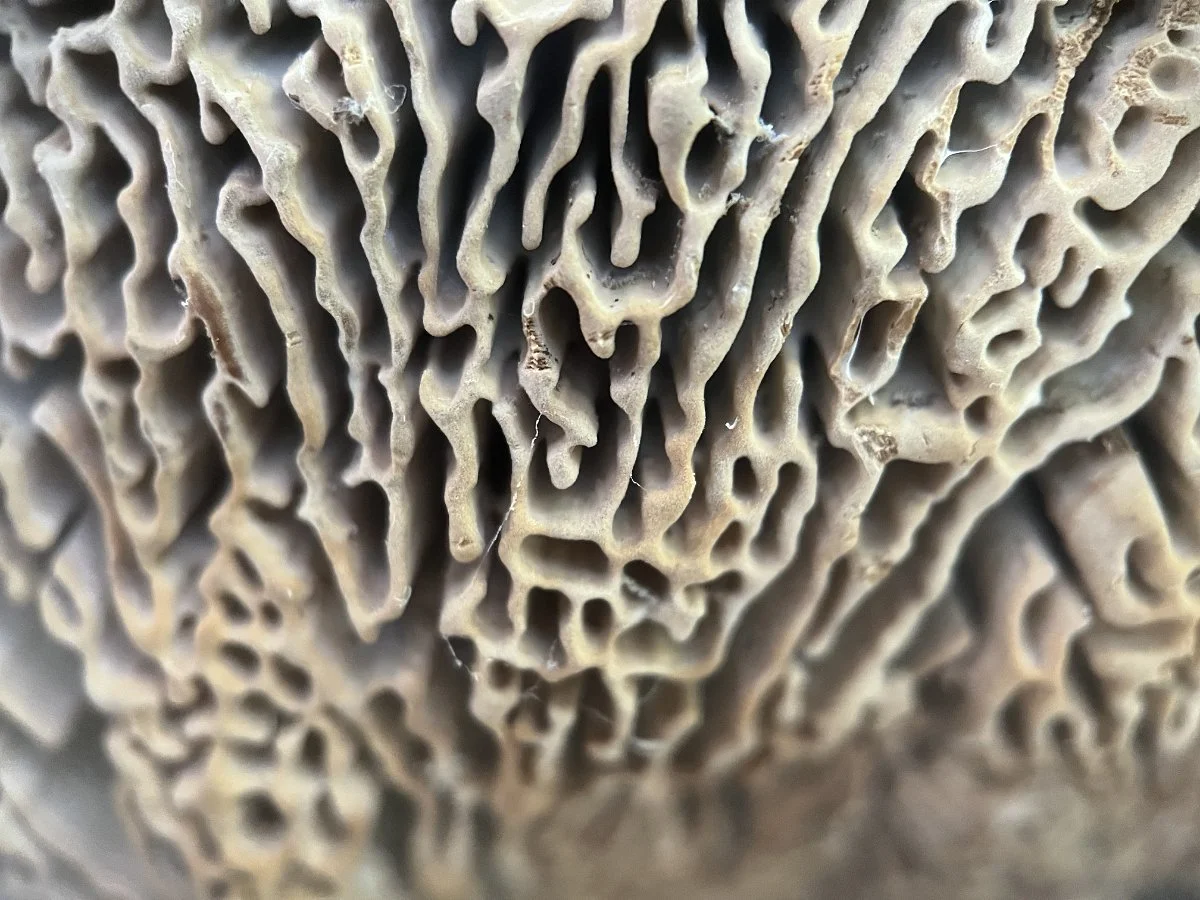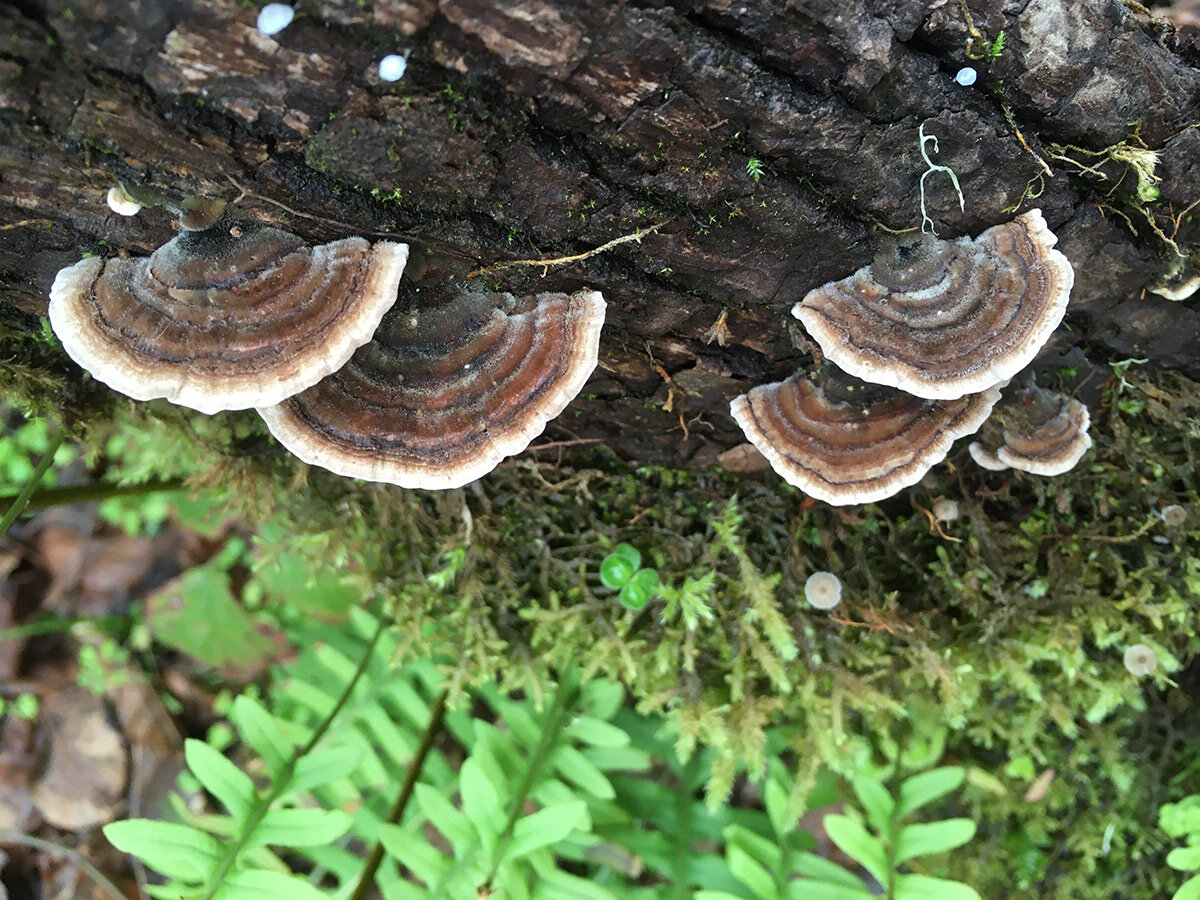This cluster of golden mushrooms vibrantly glowed in the afternoon sun this fall. They were popping out of the side of a willow tree growing in the wetlands. Its sunny, yellow-orange cap was adorned with orange scales and was moist and sticky. This gelatinous quality of the cap was referred to as viscid in the mushroom guides I have. Underneath, it had wonderful gills radiating out from a scaly stalk.
This mushroom is classified as a saprobe—a group of fungi that act as decomposers. They get their nutrients from feeding on dead and decaying wood, leaves, litter, and other organic matter. It was interesting to see them growing from the sturdy trunk of a live tree. I wondered if a mischievous forest gnome had glued the stalks to the side of the tree. Later, I read that some of the species of Pholiota grow on live trees. That said, farther up the tree on the end, it was damaged and decaying which maybe has worked its way down into the center of the tree where these mushrooms were emanating.
Identifying mushrooms is tricky business. Every time I read about them, the guide books refer to look-alikes and needing to look at spores along with other factors such as habitat, time of year, etc. So I only feel comfortable identifying this one down to the genus Pholiota.
I have been struck by the abundance and variety of mushrooms this year. I wondered if the weather conditions this year had brought forth more mushrooms. This seemingly would make it easier to notice ones that are usually there this time of year because they are in greater numbers. Either way, I am especially enjoying encountering them throughout the landscape this fall.



